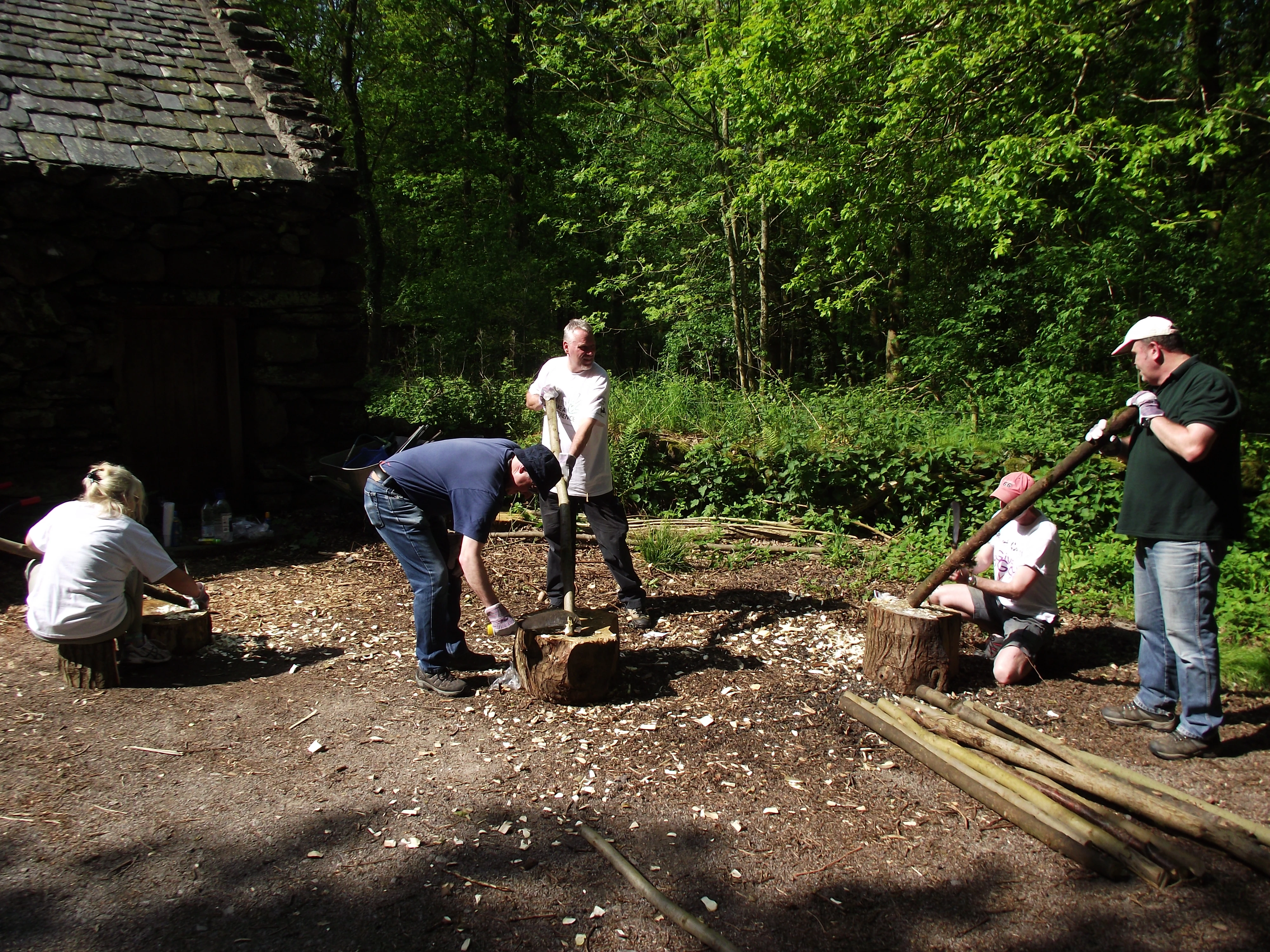Give and Gain Day 2014
, 19 May 2014
Last week, as part of Give and Gain Day 2014, we had 50 volunteers from the Lloyds Banking Group helping with a number of projects here at St Fagans. Some helped with the Gardening Department, some helped the Historic Buildings Unit while some assisted with a project alongside the Alzheimer’s Society. Myself and Bernice had the help of 11 volunteers to build a dead hedge in the woodlands near the bird hide.
We had been planning on building a dead hedge in near the bird hide for a while, for a number of reasons. A dead hedge would act as a screen for approaching the bird hide, meaning that birds on the feeders would be less likely to be scared by the approaching visitors. A dead hedge also acts as a wildlife corridor, giving cover to a wide variety of wildlife as they move through the woodlands. Visitors had also begun cutting through the woodland, and one section of the dead hedge was to act as a deterrent meaning visitors would be more likely to stick to the paths.
The first task of the day was the sharpening of the fence posts. The posts are needed for structure and need to be driven firmly into the ground. Creating the sharp end obviously makes this much easier. After creating pilot holes, the poles were then driven into the ground using a sledge hammer. Once the posts were in place, we could then begin to assemble the dead hedge.
A dead hedge is built up of dead woodland material. Over the past couple of weeks I have been asking the gardeners and farmers here to help by collecting any trimmings and off cuts and delivering these to the bird hide for use in this project. Everyone was incredibly helpful, and we ended up with a vast pile of material… or so I thought. Dead hedging takes a lot of material, so along with some of the volunteers I headed into the woods to do a bit of clearing to gain more material.
After lunch, we headed up into the woods near the site of Bryn Eryr, the Iron Age farmstead currently being built. This area has previously been cleared so there was a lot of cut material for us to collect. This was loaded into a trailer and taken over to the bird hide. The afternoon finished with us using this material to finish the dead hedge. As an artistic final touch, we used some lime cuttings to add extra height and a certain je ne sais quois to the finished hedge.
As these pictures show, the day was a huge success! The weather could not have been better and I think everyone enjoyed themselves. The 2 sections of dead hedge we wanted to build got done, and I’ve already earmarked some projects for future volunteers! The amount of work done in a day was incredible, it would have taken me and Bernice a lot longer to do without the help of the volunteers. A huge thank you to everyone who helped us and the other projects too!



























